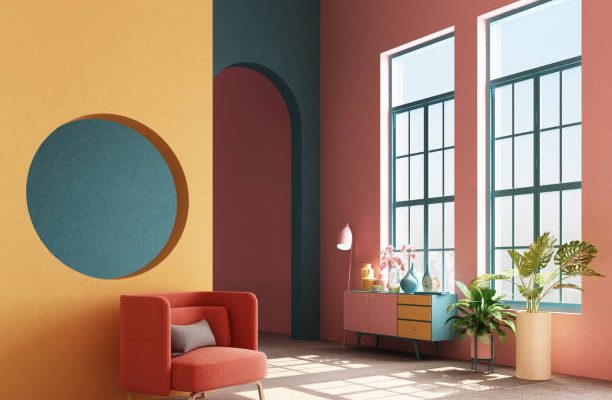Ever stared at your room’s walls, hoping for an ounce of motivation or clarity? Believe it or not, the color of those walls might influence your academic productivity. Let’s unravel the captivating realm of color psychology and discover how it shapes our concentration, especially during tasks like essay writing.
Colors and their influence have been a subject of intrigue and wonder for ages. From the vibrant hues used in ancient ceremonies to the more modern utilization in branding and marketing, colors have profound effects on our psyche. As we venture into the study of color psychology, especially its role in academic productivity, we embark on a journey that amalgamates history, science, and individual experiences. The potency of colors in shaping behaviors and impacting outcomes cannot be understated.
Color Psychology: An Overview
What is Color Psychology?
Color psychology is the fascinating study of how colors can sway our moods, feelings, and behaviors. It has deep roots in art, design, and now, even in improving academic productivity. Think of it as the science behind choosing colors that ‘speak’ to us, enhancing various aspects of our lives.
Colors and Emotions
We’ve all felt serene looking at a soft blue sky or energized by a fiery red sports car. Colors can evoke a spectrum of emotions. Pastel tones might calm us down, while vibrant shades could fire up our enthusiasm. This relationship between colors and our emotions forms the foundation of color psychology.
Implementing Colors for Essay Writing and Study Spaces
When it comes to essay writing, the environment matters. Using color strategically can make all the difference.
The Best Colors for a Study Room
Green, known for its association with nature, is an excellent choice. It promotes relaxation and focus. Blue, as mentioned, can also enhance concentration. Pastel shades, in general, might provide a neutral, non-distracting backdrop.
Colors to Avoid in a Study
Space Bright yellows and reds, although cheerful, can be overly stimulating. Unless balanced with neutral tones, they might be more distracting than helpful.
The Science Behind Colors and Concentration
How Colors Impact Brain Activity
Research suggests that colors can influence our brainwave patterns, hormonal releases, and neurotransmitter activities. These biological responses can either ramp up our concentration levels or sidetrack them. Want a little secret for those aiming for a Ph.D.? The best phd thesis writing services often advise students to consider their study environment’s color scheme.
Practical Tips to Transform Your Study Space with Colors
- Test Colors First: Before committing, paint a small section of your wall to see how it feels.
- Use Accents: Throw pillows, rugs, and artwork can introduce secondary colors without overwhelming the space.
- Think Lighting: Natural light can alter how a color appears. Always consider the room’s lighting when choosing a hue.
Colors and Their Specific Effects
Different colors spark various effects:
Blue
Often associated with peace and stability, blue can enhance concentration and mental clarity, making it a favorite for study rooms.
Red
While red can invigorate and stimulate, it might also increase stress if overused. It’s best for activities requiring short bursts of attention.
Green
Nature’s favorite color offers a calming effect, reducing anxiety and fostering focus. Perfect for long study sessions, don’t you think?
Color in the Study Environment
Choosing the Right Color for Your Study Room
No one-size-fits-all here. Reflect on your personal reactions to colors. Do you need a calm oasis for study? Pastels, especially blues and greens, might be your allies. Craving energy? Splashes of red could do the trick.
Adjusting Lighting and Furnishings
Beyond wall colors, consider lighting. Natural light paired with soft colored walls can be a game-changer. And let’s not forget furniture. A comfortable chair in a color complementing your room can amplify the positive effects.
How Color Can Improve Essay Writing
Boosting Creativity and Focus
Imagine crafting an essay in a room colored to boost focus. The thoughts flow seamlessly, and creativity blooms, turning a daunting task into a delightful endeavor. Intriguing, isn’t it?
Avoiding Distractions
A harmonious color scheme reduces visual distractions, ensuring your mind doesn’t wander off the essay topic. Can you already visualize the “A+” grade?
Conclusion
The intertwining of color and academic productivity is fascinating. By mindfully choosing hues, we can craft conducive study environments, improve concentration, and even ace essay writing. So, the next time you’re planning a study room makeover, remember: color is not just about aesthetics; it’s a tool for academic success.
Navigating through the spectrum of color psychology and its consequential effect on academic endeavors has been enlightening. Not only do these shades offer aesthetic value, but they also have tangible implications on our concentration, creativity, and productivity. Recognizing and harnessing the power of colors can pave the way for enhanced academic and even professional achievements. Indeed, the palette of our surroundings has the potential to paint our future successes.
FAQs
How do colors affect our moods?
Different colors evoke various emotions. For example, blue can be calming, while red is stimulating.
Is there a universal best color for studying?
Not really. It’s subjective and based on personal preference, though soft blues and greens are popular choices for focus.
How can I incorporate color without repainting my room?
Consider using colored accessories, furniture, or lighting to introduce your desired color effects.
Do the effects of color psychology apply to online study environments?
Yes! The color schemes of online platforms and apps can also influence concentration and motivation.
Can too much of one color be counterproductive?
Yes, balance is essential. Overusing even calming colors can lead to monotony and decreased motivation.
Has color psychology been utilized in academic settings?
Absolutely. Many educational institutions are now integrating color psychology principles into classroom designs to foster better learning environments.
How does color psychology correlate with modern academic challenges?
With the rise of digital learning, understanding color schemes that reduce eye strain and boost online engagement is crucial.
Are there entities that aid in academic pursuits using color psychology?
Yes, in fact, some of the “best phd thesis writing services” have started providing guidance on optimal color schemes for thesis presentation and design, based on color psychology.
Can color psychology principles be applied to digital screen settings?
Indeed! Adjusting screen colors or using apps that modify screen hues according to the time of day can aid in reducing eye fatigue and improving concentration.
Where can I learn more about the application of color psychology?
Numerous online courses, workshops, and even dedicated degrees in design and psychology cover the subject in depth. Always ensure to check for credibility and reviews.























